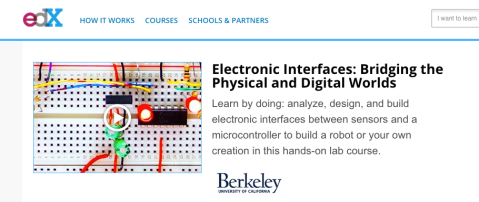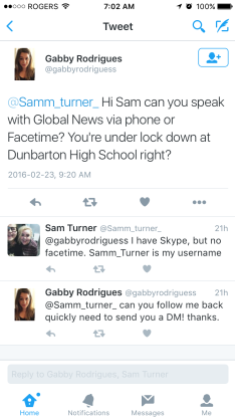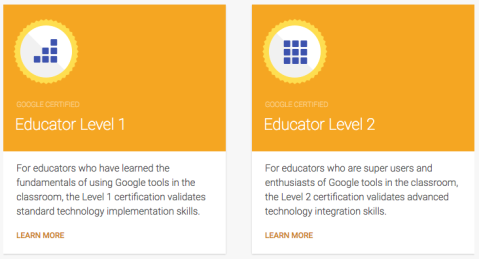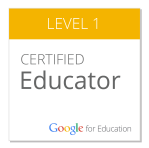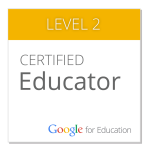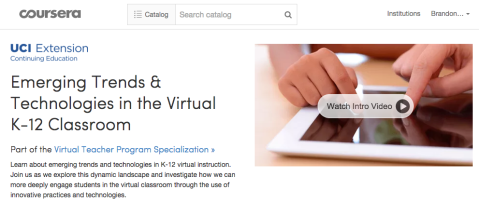Education doesn’t need monorails!!!
I had a great conversation with an amazing educator/administrator at workyesterday. We were both feeling a little burnt out and overwhelmed by all these people / companies gouging at us to extract every single possible last drop of knowledge we have on education so they can make a buck.
I am getting tired of meeting self-proclaimed Gurus, Ninjas, Experts, Thought Leaders, and the like who aren’t educators (or maybe used to be) taking over the spaces and conversation by consulting, selling and speaking to educators about educating with the goal in mind being dollars and not better always better experienced for students. I want to go to a session and see a teacher who puts in long hours trying something cool, who tweaked it to work on student feedback and who shares it to the world! Instead I get a sales person like the monorail guy on the Simpsons telling me what I need for the students in front of me.
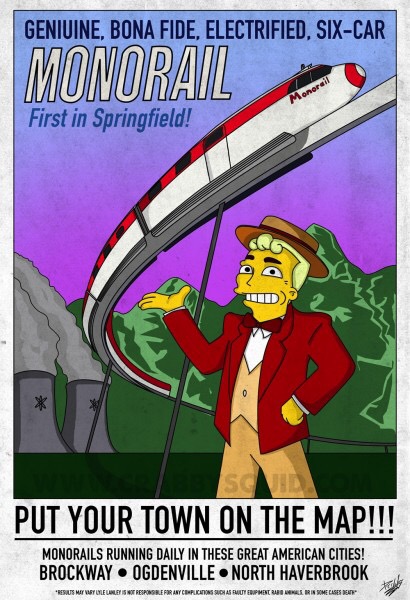
I am not saying I hate Edtech or start ups, I have done a countless number of things with them and happy to test and try out things and when I see a cool tool that really gets at rich learning I am all for it. But lately I am seeing corporations / people enter the space and key decision makers are getting the wool pulled over their eyes and making big deals, big decisions and buying random things / ideas instead of checking with educators first.
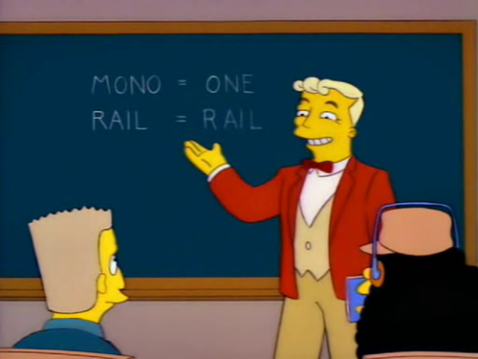
To the start ups and Edtech people out there, I have lots of love for you, and there are good ways of going about creating things for education spaces, and it involves students and teachers from day one. There are also the massive companies entering education, professors turning to consultants and teachers who lost their vision in education.

With the world being more connected it is easier to find people doing things great things, it’s easier to publish information, easier to earn degrees or badges or become the next Google educator. I did the Google educator program and I learned a lot about great ways to use the tool for student learning. I don’t need google to define me as an educator or rate me, same goes with Microsoft, Smartboard, or whoever. I am and always will be a teacher looking for the best things for my students. I present for free, upload all my resources for free (one exception is I uploaded a resource to Teachers Pay Teachers to see how it works but 1 is .99 and the other 3 are free) and I will connect anyone doing anything amazing to other people for free…why? I am in it to move education forward. My lessons reach my 30 kids that year, but if I have something awesome that can go to 6 teachers to reach another 180 kids that is amazing.
And just like in the Simpson the sales pitch ends, schools get all their shiny new things / ideas and without PD or support and the monorail crashes and another company walks away with cash. Soon another is knocking at the door with a solution to the last problem.

Alright this rant is done 🙂 I am almost at my subway stop. My key message is, do what is best for kids, don’t sell out, share and be nice to others, and let’s make the experience for kids the best we possibly can collectively. I know I have the privilege of having a full time teaching job so DON’T HAVE to hustle for my pay. So I see where some of their hustle comes from but my pay has no direct correlation to how hard I hustle (just how old I get unfortunately) but I hustle in everything I do!
All my educator friends have an amazing summer!
Global News getting in virtually while students on lockdown
There is a stabbing in a school, the students are in their classrooms under lockdown and imagine this, someone is trying to get into their classroom! Someone trying to make them unsafe and put them at risk. But it isn’t the person with a knife…it is reporters from Global News!
I remember as a kid doing lockdown drills and then as a teacher walking my own class through them. You aren’t supposed to be making noise, you aren’t supposed to be on your phone and you need to wait quietly until the lockdown is over.
Global News’ reporters took to Twitter to find students in lockdown at the school and scrambled to get someone inside to do a video call with them. As adults they should have known better. Erick Espinosa wasn’t successful and the student did the correct thing. Gabby Rodrigues was able to convince a student and she is the one featured in the video below.
I am not going into the details of it as you can find it in the article here: http://globalnews.ca/news/2534517/pickering-high-school-in-lockdown-after-several-students-stabbed/ but if you Skype with a student and have her hiding under a desk…that is breaking protocol. It disgusted me because it is going out of the way to make students and staff unsafe. It also sets a horrible precedent that reporters will now try to do this on other situations and students feel it’s ok to be doing calls during lockdowns.
I put in complaints to Global and their parent station with zero response as a concerned educator. I escalated my concern to the Canadian Broadcast Standards Council and after a few months I got a courtesy response back defending the actions of the reporters. Here is the full letter (below) by Mackay Taggart News Director – Global Toronto . They insist that they didn’t reach out to the students (which is clearly untrue from the following screen shots above) and that the teacher gave permission. I don’t know what teacher would ever allow a student to do a Skype call during a lockdown. Anyways that is my report on the matter and hope that Global and other news agencies respect school protocol and police protocol to make schools safer!
Full Letter from Global Viewer Feedback – Zoras
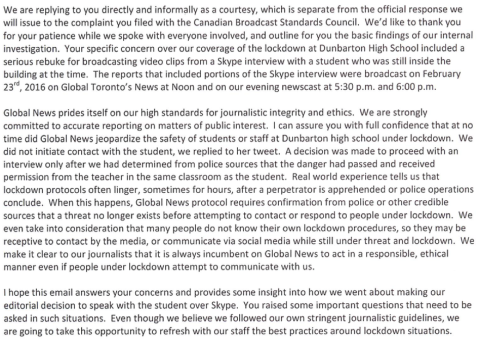
For White Folks Who Teach in the Hood… and the Rest of Y’all Too: Reality Pedagogy and Urban Education – A Review
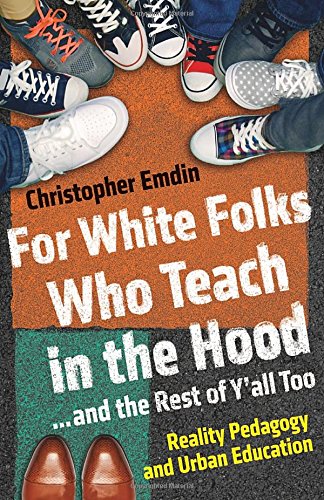
I heard the title last year and saw the pre-order on Amazon and laughed. I was thinking, am I the “white folk” he means? Was my laugh out of discomfort? How could a book title cause so much thought? I was going to pre-order the book anyways but now I really needed to read it! It had me checking myself, my identity, my privilege, my lived experience…all from a pre-order on Amazon…wow Dr Emdin you did it! (FYI he goes into defining “white folk” and “the hood” in the preface).
I got the book on Kindle the first day as I couldn’t wait for it to ship! This book needs to be in the hands of every single educator. Not just in urban settings and those working with youth of colour, as all our students would benefit from this work. I watched Dr. Emdin’s TED talks, read his papers, seen his articles, caught his news clips, re-tweeted his tweets, read his other book and seen him live multiple times in NYC and Toronto (so this review isn’t biased at all 🙂 ). I thought I knew what he is all about…but I was wrong! I didn’t know about his work and experience around indigenous education. The first chapter opens up on indigenous education! With a lot of work happening in Canada, this comes at a perfect time and based on the Truth and Reconciliation (TRC) Education Recommendations it is a perfect compliment. Indigenous and Neo-Indigenous youth share very different histories but common circumstances and oppression in and out of schools.
I started writing this review and had summaries and quotes from the book but I can’t possibly do the book justice, you need to read it. So I will continue on with why this book is important and how we can use the book to better education.
Dr. Emdin breaks the book down into 11 chapters filled with amazing ways to transform education. It isn’t just about the students and “fixing them of their problems”, it is really about a complete change needed from top to bottom. Schools are failing students and Dr. Emdin is giving us the manual to fix it! As educators working with students, we need to look critically at the extremely complex and interwoven factors that impact the success and failure at school. The deeply engrained Eurocentric model of schooling that many of us as teachers were extremely successful at navigating in order to get to where we are today, is hard to disrupt. It is replicated class after class, year after year, with many teachers, teaching as they were taught (this includes teachers of colour as well). Dr. Emdin eludes that the “white folk” may not actually be white at all.
I would challenge teachers of all colours, backgrounds and religions to evaluate the narrative they provide to students. This book is excellent for system leaders, policy makers, educators and parents, to understand the deeply rooted issues in our education systems. Dr. Emdin eloquently brings them to the surface and identifies ways to make change. This book looks at the past and theory but most importantly moves forward with actions and recommendations. I see this as a book I read again, return to and refresh myself as an educator.
I read many of the other reviews and articles on this book with so many doing the book justice. A few articles though, try to undermine and suppress the work that is desperately needed calling this pretty much a manual for teachers to run schools like gangs. These authors need to check themselves and evaluate the hegemony in their own work. I took out the citation to them as the click bait they used in their titles get them enough clicks. 😉
Those in the Toronto area Dr Chris Emdin will be doing a Toronto book launch at A Different Booklist on April 22nd. More information to follow!
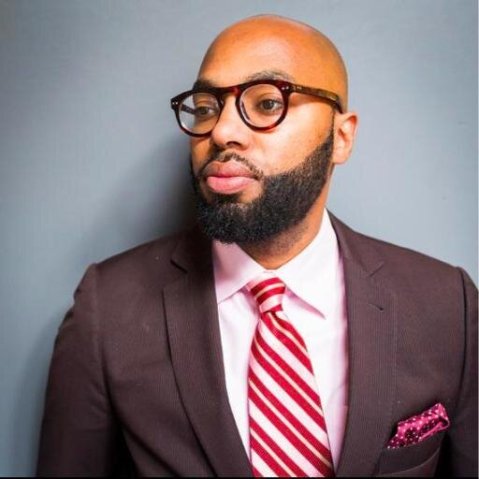
Dr Chris Emdin – Credit Ryan Lash
Cover Photo Credit to Beacon Press
Dr Emdin Photo Credit to Ryan Lash
See more of Dr Emind at https://twitter.com/chrisemdin
Are we doing enough for our new teachers?
I am writing this out of a concern I have had not only for myself but more importantly a ton of teachers new to the profession. Let’s start with the supports for new teachers. We know there is already the New Teacher Induction Program and also many boards have beginning teacher groups which offer great support but what my concern is around is the treatment of new teachers from a job perspective. Let’s also at this point assume they made it onto the list, as getting on a list to be hired is a whole other post. Let’s also assume they have survived supply teaching and now doing LTOs or doing a 0.5 or 1.0 contract.
What really bothers me is the inability to provide new teachers with support as they bumped from school to school each year or even as drastically as each semester. It is hard on the students but also on that teacher who is trying to develop resources for the first time and learn the ins/outs and culture of the school. As a science teacher, just trying to find all the equipment for demos and experiments takes a year.
Often word comes around that a new teacher is joining the school either for a semester, halfway through a semester or at the start of the year. By this time the timetables have been settled and in some schools I have seen the most senior teacher get the “best” classes (ex. Grade 12 Academic) and then the new teachers are scheduled into what is left. By giving the first year teacher 6 completely different courses, often more applied and behavioural and subjects across multiple departments, it is setting them up for a hard start. Many teachers including myself, have been there with 6 courses, 2-3 aren’t even in the qualifications of what you have been trained to teach. You have to report to 1-3 different department heads and do a great job doing it. I have watched too many teachers starting out getting overwhelmed, stressed out and not supported. They then finish the semester or year and shipped somewhere else.
They arrive then at a new schools again, you have to re-learn everything as so many procedures are school specific and you need to build up relationships with staff and students. Having staff to support you is huge and many teachers just give up as they know they will only be there for a semester so why bother. As teachers and system leaders we need to support the new teachers. We need to give them timetables that are manageable, we need to have senior teachers take on a section from some of the challenging classes (but are my favourite to teach and have the biggest rewards) and have mentoring take place. The unions and administration need to work together to not just rank and order teachers by years experience and give the junior teacher what is left. I am not commenting on the union, and not saying take away jobs for more senior but let’s spread the load a little. I hope as we enter another spring and teachers get their surplus letters that admin, department heads and unions take this kind of thinking into account.
Tweet or Not to Tweet – What is @Norm’s role here?
It all started last night when I liked Norm’s article and called out Balkissoon for saying Twitter isn’t Norm’s job as I felt he was engaging youth. I quickly read her article when it was first published and maybe I missed the other points in the article but the title “Twitter is not your job, Norm. Doing good for Toronto is” was about that he shouldn’t be on Twitter. I since have re-read the article and to be honest I don’t know individually what each City Councillor does or votes against but I agree with Balkissoon that we need more space for our youth and meaningful engagement opportunities in the community. As well, Balkissoon mentions about getting youth into pools for free and better childcare, I agree with her as those are things youth and families should have access to. I like her reference to the 3 cities report which was something I used in my masters class on Urban Education. I agree with the article content and I think it was the title that threw me off. Although I still feel there is value in Norm’s twitter feed as he engages youth a different way than most politicians. I like what Norm tweets as it has engaged a set of the population that usually isn’t reached by the government. I have also noticed what he hasn’t tweeted and I like what Cole points out in his article. So Balkissoon, I shouldn’t have jumped to conclusions to tweeting you based on your articles title. My apologies for that.
We have just moved over from a time where Toronto was known only by Rob Forb. I was in Taiwan teaching a couple summers ago and people came up to me and asked where I was from, and I would say Toronto or Canada and they would say oh where the big fat man who eats cats is or oh the rude fat man or oh Rob Forb. (See this video about cat eating reference which I didn’t get until they showed me the video –> Click here). I got calls from relatives in the states asking me what is wrong with Toronto over this as well.
But moving along to @Norm. I am one of his 223 000 followers and so are many youth of Toronto. I have former students on twitter who tweet brilliantly, engage in critical dialogue, challenge societal issues, take action and document it through their twitter feeds. I also have former students who tweet random words, a bar of rap lyrics, cool photos, strange photos and comment on the Drake vs. Meek Mill beef. Maybe Norm appeals to the later half and irks the Balkissoon’s and Cole’s of the world. I also have students who combine both those and tweet critically about Toronto issues and hip hop. I don’t strongly agree or strongly disagree with Norm’s platform, I am not in his riding, and I don’t know enough about him. I do not feel he is the most amazing or brilliant person to be tweeting but I do think he is doing a great thing. He has gotten onto the twitter feed of 223 000 people, he tweets his pride about Toronto, informs of city bylaws as they pass, lets us know what a snow storm costs to clean up, when we don’t have to pay for street parking, how to fix something that is wrong in the city, how to make a complaint to 311, random quotes and of course Drake references. Not all youth subscribe to their local Councillor or read newspaper articles on politics. In this day in age it is about instant, to the point information, that is relevant to their lives. Youth follow many celebrities, famous people, musicians, activists and friends. Just like reading a book or newspaper article it is always important to question the author, the source, the intentions and politics around it.
I love Twitter and so happy other people engaged in the conversation. Danielle (@settlingslow) recommended Cole’s article about Norm and I am glad she did. She also mentioned about if youth get a chance to learn about media criticisms. I am happy to say in Ontario there is that in the curriculum and even more relevant to social media OSAPAC has released a digital citizenship resource https://osapac.ca/ccpalo/dc/ and TDSB ICT standards http://schoolweb.tdsb.on.ca/Portals/elearning/docs/ICT%20Standards.pdf . Student’s need to watch what they consume and also look for what is being said and also what isn’t being said. They need to be conscious of what they put out on social media as well.
Another amazing person who I look forward to seeing her tweets is @HYMire. Again why I love having such a rich PLN on twitter, she brought up Norm not doing enough for Black communities and issues around anti-Blackness. I am glad she brought that up and this allowed me to explore deeper into the issue. Cole does a great job in summarizing many of those points. I feel youth who follow Norm will read his rebuttal to Balkissoon, and then read what Balkissoon said, then read what Cole wrote after and open their minds to the situation. This is the beauty of Twitter and how this has sparked the issues Balkissoon and Cole raise. I know many students who talked about Cole on Twitter and issues of carding and took to twitter to express themselves. I have witnessed and intervened when my own students walk home and police pull up beside them to ask them what’s up, I came over and asked if everything was cool, and the cops moved along, the students talked to me the next day and told me it happens all the time on their way home. Good kids, going home only to be stopped because they are Black. It is heart breaking. What can I do as their teacher? Have critical conversations, involve community partners like the YOW worker at Pathways, spread the word about carding via social media and vote smarter. The pain I felt when I saw what was happening to my students is far less than the pain felt by those walking without that privilege to be passed by the police.
With this being said I still think Norm being on Twitter is good for Toronto and it is still engaging youth and giving them a gateway into politics and civic engagement. I don’t agree with Norm politically on all fronts, as I don’t think I ever agree fully with politicians and I am very happy there are Balkissoon and Cole with another narrative and challenging what Norm is tweeting (or isn’t tweeting). I have since read more of Balkissoon’s work and she has great points about our city and I have been a long-time fan of Cole and often discuss his work with youth. I think both articles bring up the issue of co-opting culture and the dangers of that. Youth need to see who is co-opting different cultures (for example youth culture or hip-hop culture) and packaging it back up and selling it back to them. They are hit with this on a daily basis by people and corporations. Even in regards to hip hop in education there is much debate. I was in New York at Columbia University for the Hip Hop Think Tank and it was an amazing discussion. There were University professors, grad students, community educators and community members all discussing hip hop’s position in schools. Some felt that you can’t put requirements on hip hop and then allow it to be institutionalized and then who could teach it? A scholar? An MC? What about a MC who went to school and successfully navigated the education system and now is a scholar? Or are they now a sell out to the community? Those were some of the great starting points to a super deep discussion (and some heated arguments 🙂 ). We hosted a debate last spring in Toronto over this very issue with so many great voices and have worked with educators and hip hop artists on hip hop as critical pedagogy to explore issues of race, class, religion and barriers in education. Along the whole way youth need to be present at the table and driving the direction of the city as well.
To close, Norm’s tweets may be lacking some of the critical issues facing Torontonian’s, especially for people of colour/lower SES, but his tweets do have substance, information and starting points that are directed at youth as well. The beauty of twitter is that you can have as little or as many people in your PLN that shape your learning. I am happy to have @norm part of it and just as happy to have @balkissoon, @DesmondCole @settlingslow @HYMire part of it as well and appreciate the great conversations.
Here are some of the tweets in the last week I have found informative, and novel info about Toronto I wouldn’t have known without seeing his tweets even though I do follow many political / news accounts.
FYI: The clean-up from last night’s storm will cost between $1-1.2 million. #Toronto
— Norm Kelly (@norm) December 29, 2015
HEADS UP: Starting tomorrow, Sunday subway service starts an hour earlier at 8am. #Toronto #TTC
— Norm Kelly (@norm) January 3, 2016
City Hall last night. Captured by @bnewfield. #Toronto pic.twitter.com/99AMfIzaLG
— Norm Kelly (@norm) January 2, 2016
FYI: Plowing on highways begin after 2.5cm of snow, plowing on main roads after 5cm, and plowing on local roads after 8cm. #Toronto
— Norm Kelly (@norm) December 28, 2015
‘Don’t let the past steal your present.’
— Norm Kelly (@norm) December 26, 2015
REMINDER: You don’t have to pay for on street parking on Christmas. #Toronto
— Norm Kelly (@norm) December 25, 2015
YouTube: Shifting from Consumers to Curators to Creators #GAFEsummit
EdTech Team always has great conferences and during my session I decided to bring more teachers onto using YouTube. The idea was to shift from content consumer, to curator to creator all within one session! Many teachers saw the potential and moved along the continuum.
Share slides: bit.ly/GAFEtoronto
Live Stream: (first time trying Hangouts on Air, there were a few technical issues with the projector ((not my fault 🙂 )) and with the lighting, but you will get the idea 🙂
Getting Going with STEM with ICT & 21st Century Learning #BIT2015
Another great year at BIT2015! Here is my presentation on using STEM with ICT and 21st Century Learning
https://docs.google.com/presentation/d/1BY7_X5pVRfi1icpLMbDWoBg0NETiZJz1-C-P9cB5kGU/edit?usp=sharing
Using Social Media to Connect Your Classroom and You – #STAO2015
Below is my presentation from STAO 2015 on using Social Media! Feel free to take a look, share and comment! Would also love to hear from you on how you use social media in the classroom!
Short link: http://bit.ly/STAOSM
For more on STAO check out the Storify here: https://storify.com/brandonzoras/stao-2015-stao2015/
Becoming a Google Certified Educator #GCE Level 1 and Level 2

This spring I was looking to do some of the Google Exams but saw some changes were coming. I decided to wait until the summer and give the training a go. The training for the exams was excellent PD on its own. The training was almost like it’s own online course, you can log in, check your progress, see teacher examples and learn technical aspects of Google products. What I think is very important to know is that the focus is not on the tool, but what you can use the tool for. From time management, creativity, communication and digital citizenship are just some of the topics covered. You could use those ideas with other tools like Skype or Padlet, etc..
Any teacher looking to learn the tools or better yet what you can do with the tools, I recommend this training. I spent about two weeks on my own covering one or two modules a day (30-60 minutes) and played around with Google Apps to try some of the suggestions. Some things I was very comfortable with and others were new to me or new ways to use that tool in the classroom.
To access the modules: https://edutrainingcenter.withgoogle.com/training
Level 1: Training Fundamentals
This segment consisted of 13 units in 3 categories (pictured below). Each section goes over a clear criteria, lists the tools you will be using and is loaded with teacher examples. This is great for beginners and people who haven’t used the tools very much. It has a lot of step by step guides and examples to get you going.
Level 2: Advanced Training
This has the same 3 categories but with 9 units this time. I found this to be less about the actual tool and more the application of it. There were some challenging aspects to the training as I was not familiar with making charts or manipulating data in sheets. Some people may find that part easy. It also got into some of the labs and extensions you can add to the various google products.
Three Categories
The Exams
Here are all the answers…
Actually I signed something that said I wouldn’t share about the exam, sorry! But what I can tell you is that if you practice the exam practice questions at the end of each unit and then try out the tools yourself you will be fine. The exam is a mix of questions and actually doing the task in a Google account they make for you.
I ordered the exam thinking it would be ready right away and then it said 24-48 hours. I got it in about 20 minutes. One thing that was a surprise to me was that it records you during the exam and you see yourself on the question screen. The exams are $10 US for level 1 and then $25 US for level 2.
Certification and Badges
Right after you hit submit the program grades you and lets you know if you pass. It would be nice to go back and see feedback on what you get wrong or a %, but it just says pass. Within about 15 minutes I received my badge and certificate. One thing to note is that this only is valid for 2 years, then you will need to renew. I can appreciate that technology changes rapidly and that you need to keep up to date on new changes. The badge and certification only applies to the individual so it follows you if you move schools or jobs.
Going Forward
The next option for Google training is Certified Trainer or Google Innovator. Level 1 and 2 are not required to do the Trainer Program, you can find more about the program here: https://edutrainingcenter.withgoogle.com/certification_trainer
To be a Certified Innovator you need to complete the Google Certified Educator Level 2 and an application. More on that can be found here: https://edutrainingcenter.withgoogle.com/certification_innovator
I haven’t decided which one I am going to go for out of the two but will keep everyone posted!
Check out the FAQ for more info https://edutrainingcenter.withgoogle.com/certification_faq
Happy to say I am Google Certified Educator Level 1 and Level 2 🙂
MOOCs the Future of Teacher Professional Development #MOOC #EdX #Coursera
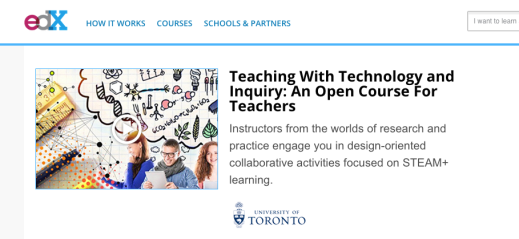
This summer I tried out a MOOC! After hearing so much about them the last few years and actually missing being a student since I completed my masters and all the AQs I needed. I decided to go with edX (www.edx.org) as I saw the course “Teaching With Technology and Inquiry: An Open Course For Teachers” (https://www.edx.org/course/teaching-technology-inquiry-open-course-university-torontox-inq101x). At first I was a little hesitant that it was offered by University of Toronto as my undergrad, B.Ed., M.Ed. and an AQ have all been from there but I knew it was going to be high quality and I could try another institution later.
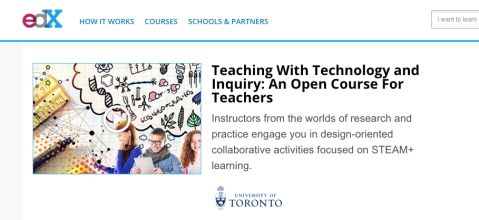
The reason I really believe in the idea of MOOCs, is that they are free, open to anyone who wants to learn and not requiring prerequisites. It is not just important for teachers but anyone who wants to learn from a University. It can be for professional growth or just for fun. It is also good because non-teachers who don’t qualify to take such courses at university are able to learn and benefit. Anyone in the EdTech field would benefit from understanding technology and inquiry.
The course was massive at the start, I think they said over 5000 people signed up. The weekly videos that Jim Slotta and Rosemary Evans posted were excellent, explaining the concepts, and best of all I could watch anytime. Rosemary also had her staff do videos in live classrooms, and showcase teachers actually modeling inquiry with technology. This was very beneficial as it gave teachers around the world an idea of how to implement it. The weekly tasks involved a lot of self-reflection, which was actually useful if you watched the videos and participated in the discussion forums. I did learn a lot from other teachers in the discussion forum but with so many people in the course that is one area I got a little lost. There was also a design strand where we got to collaborate on a lesson together. The idea was great but working online with a group of teachers bouncing in and out of groups was a little challenging. We got to critique other lessons and then add to our own. They will be putting a wiki together of the lessons to share.
Overall I really enjoyed the course and learned just as much if not more than a regular University course of AQ Course. You definitely have to be motivated, as I know if I paid $700 I would be sure to be on time but I didn’t have this problem as I stuck to the course deadlines. I ended up paying to be verified which I believe was $40, which goes to support the edX site to keep offering free courses. I highly recommend taking this course! Thank you Jim and Rosemary for a great course!
I am on to MOOC number 2, this time trying Coursera “Emerging Trends & Technologies in the Virtual K-12 Classroom” (https://www.coursera.org/course/k12virtualtrends) with Melissa Joell Loble, University of California, Irvine. I am excited to get a United States perspective and that of another institution. Stayed tuned for a review on that.
Looking for another cool Mooc?
Check out: “Electronic Interfaces: Bridging the Physical and Digital Worlds” “Learn by doing: analyze, design, and build electronic interfaces between sensors and a microcontroller to build a robot or your own creation in this hands-on lab course.” https://www.edx.org/course/electronic-interfaces-bridging-physical-uc-berkeleyx-ee40lx-0
